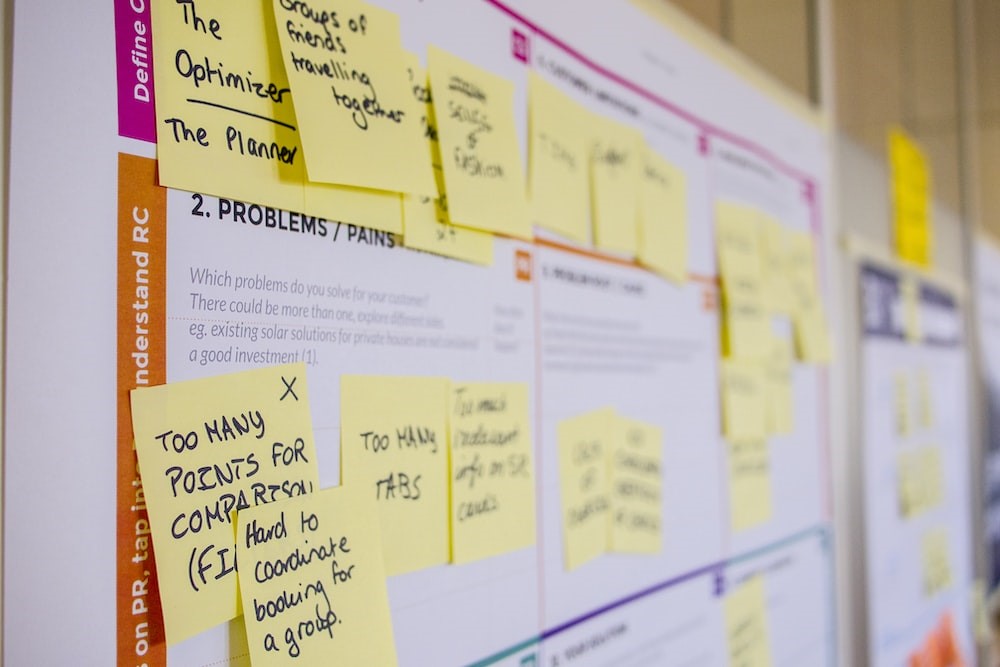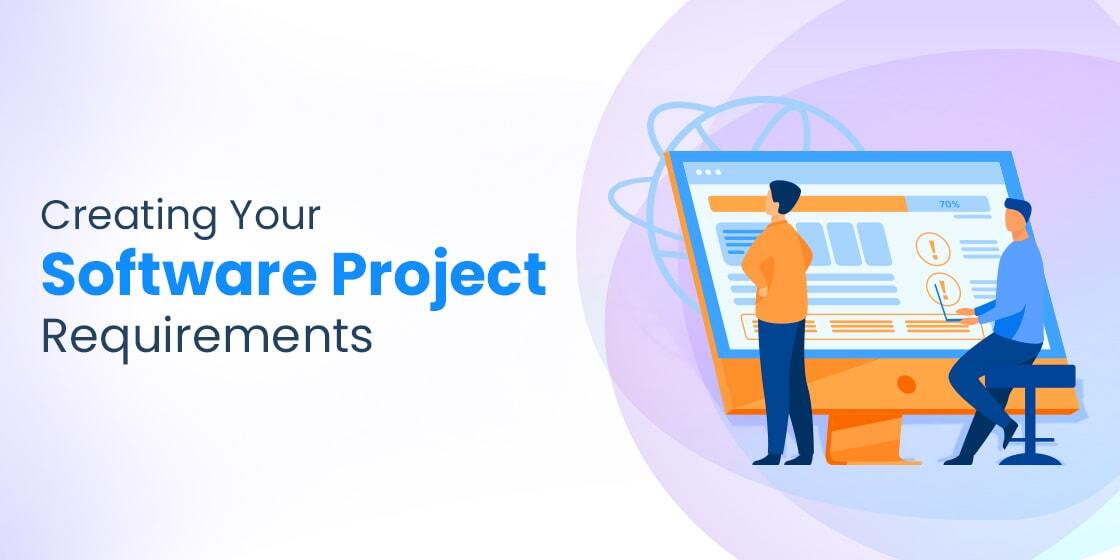Table Of Content
Discover How You Can Identify and Define the Requirements of a Project Efficiently
A software, be it big or small, requires a lot more than a great idea or a strong development team behind it. You NEED to plan it out and mange it properly too.
That is where the SRS document, or software requirements specification document, becomes your friend. Your project requirements are very important, especially when identified early, and act as a guide for various stakeholders on how to make the development process successful. Their purpose is to remind you about what you need to develop, the people you are developing for, and how your project would help solve their problem.
And if you create a comprehensive software project requirements document, you will be able to create your project exactly the way you want. Now, professionals know the importance of documenting the requirements of a project, whether work as a consultant or as part of a custom software development company.
So, let’s take a look at why software requirements are so important to collect, and how you can identify and document them for your own project.
Software Project Requirements – What Are They?

To put it simply, project requirements highlight what you need to do in order for the subject to be successful. Thy can also be considered as carefully curated tasks and duties required for your software development project, that you and your team need to fulfill in order to bring the project to life, in the way that you desire.
Now, depending on the size of the project or the number of shareholders involved, your software requirements might vary size and magnitude. Similarly, based on the specific needs of your project, there may be greater or fewer number of must-haves for your software. The purpose of identifying them before the start of the project is simple – to document all the must-have features and functional requirements you need to do in order for your project to be a success.
Why Do You Need To Define The Requirements For A Project Before Starting It?
As we mentioned earlier, requirements of a project, when identified and documented properly, can help to manage the project in terms of milestones and achievements. Most of your software requirements would be dealing with allocating the resources you need, defining and sticking to a project timeline, key tasks and functionalities you need to implement, and more.
Therefore, if you are able to identify them before the start of the project, and document them in a way that makes it easy to check them off one after the other, then it will help streamline project development. And that is exactly what software requirements for a project are used for.
Top Tips for Identifying Your Software Project Requirements

Knowing the importance of documenting your software project requirements, you might be wondering how to do that for your own project. Moreover, you might also be thinking about the elements that would be required for your project to be considered a success.
Listed below are some of the most basic, yet highly effective tips on how you can ensure that your prospective project’s requirements are properly identified and documented.
Tip 1- Find out Your Stakeholders and Discuss Their Roles in the Project
For any project, be it related to software development or otherwise, managing the stakeholders is essential for the project’s success. Therefore, the first tip for your journey of identifying project requirements is to find out your stakeholders.
Now, the most common types of stakeholders include your clients, target customers and end-users, sponsors and financers, the organization’s management, and more. To start with, you need to make a list of all of these key stakeholders, and discuss the software project with them.
Each stakeholder will put forward what he or she believe to be important requirements. However, you’ll experience that it’s not necessary that every requirements presented by a stakeholder is feasible to implement, or even actionable in some cases.
Therefore, as a project lead or manager, it will be your job to guide them, and steer them in the right direction, so that at the end of the process, you have a cohesive, achievable set of requirements to achieve.
Tip 2- Identify the Target Audience
One of your most important stakeholders for a project, are the target audience. Whenever you develop a product, whether a software product or something else, you need to know about your audience. They are the ones who will actually be using the product. And if you know their desires and dislikes, you will be able to create a product that suits their sensibilities better.
One of the primary reasons of defining your target audience before commencing the project is that it allows you to vet the requirements according to the needs of the end users. For example, a communication app targeted to senior citizens would have a very different set of requirements in comparison to the same app developed for the Gen-Z crowd. Similarly, if its websites you’re developing, then different types of websites would attract different crowds, based on the design, tone of content, and even the intuitiveness of the UI.
Tip 3- Keep up a Constant Communication Stream with Your Technical Resources
Communication is key to a well-planned and well-managed project. And without taking your technical teams onboard when gathering the requirements of a project, you will have no idea of what goals are attainable and which aren’t.
For example, if your software requires specific types of QA testing as part of its requirements, then you need to discuss that with your QA and testing teams to get an overview of its working. Similarly, there are many scenarios where it is necessary to bring your technical teams onboard, which would not be possible if you have not established strong communication channels.
Tip 4- Determine the Project Scope

Next, you need to identify all factors that are involved in the development of the project. These all-important elements will help you identify the scope and range of the project, giving you a benchmark of what needs doing.
These elements can cover many different aspects of the project, and include:
- The type of project you are embarking upon
- The various factors involved in the development of the project
- The timeline of the project
- Stages or milestones for the project
- The duties of each stakeholder involved in the project
These are some of the most common factors your need to consider when determining the scope for your project requirements.
Tip 5- Categorize Requirements into Functional and Nonfunctional Groups
Another important factors when identifying the requirements for a project, is to classify what needs doing into functional and nonfunctional groups. This allows for a more organized approach to project development, ensuring that you will get the desired results easily.
You can even classify these requirements further into specific groups within the functional and nonfunctional domain. That is especially helpful in scenarios where the project scope is huge, and chances are that unless each project is broken down into smaller, more manageable tasks, it would be hard to fulfill. These classifications may include common categories like:
- Security requirements
- Technical requirements
- UI/UX requirements
Tip 6- Keep Your Language Simple, Concise, and Clear
When developing your project requirements, it’s important that you keep it as simple as possible. And the reason for that is very simple. As there are a lot of people involved in developing a project, you need to make sure that your directions are as easy to understand as possible.
To put it simply, making your requirements clear and straightforward allows you to reduce the chance of ambiguity and communication problems from the project, ensuring that your project is accomplished on time.
Moreover, you should ensure that the language you use is clear and easy to understand. Many businesses use different outsourcing strategies to develop their product, and chances are that you might be working with people whose first language may not be the one you use for documentation. Simple language makes it easy to understand for everyone, ensuring that everyone can understand the requirements of the project.
Tip 7- Ensure Each Requirements Relates To the Project Purpose
One of the most important reasons for developing project requirements is to ensure that each job or task that will be achieved in your project relates to the expected results from the finished software. Essentially, this is one of the most important tenets of project management itself, to ensure that each project and its tasks relate to the company goals.
That is because if every task of your project does help achieve the ultimate goal of the software, only then will we be able to call it a success. And only then will all the stakeholders be satisfied completely. That is why, when proposing or documenting the various requirements for a project, it’s important to note down the purpose of it too, and how it relates to the ultimate goal.
Tip 8- Document Everything
Finally, the secret to a well-managed project is to document everything. And when we say everything, we mean everything. Over the course of the project, there will be additions and changes to the requirements for your project. And unless you document them carefully, at least one of the two following things is going to happen.
- You will fail to address the new changes into your project, due to an oversight
- You will be unable to judge the purpose of a changed feature due to improper documentation
These changes may be due to a variety of reasons, often ones that are unavoidable. Factors like sudden market trends, user aesthetics; natural or economical disasters can derail a project if they are not addressed instantly. Therefore, as a project lead, it’s your job to document these changes to know how and why each change was made.
How can You Collect These Project Requirements?

Now that you know the importance of collecting project requirements, you need to know how to collect them in the first place. There is no single method of gathering the required information, and project leads have to use a variety of techniques and strategies to create a comprehensive SRS document.
That is because many stakeholders are unaware of what kind information they need to share. Some might be too tightlipped, while others may elaborate too much on nonessential factors. And some may leave it all up to you.
Therefore, as a project manager, you need to know one thing – never assume the client’s needs.
So, if you can’t do that, how can you get your information? Let’s find out what you need to know before talking to your stakeholders.
- What requirements can you gather from a project brief
- What information you can get from stakeholders within your own team
- What are the goals of the project
- What confusions do you need to clear up before the project starts
Now, once you know the answers to these questions, the next step is to ask them the right questions. Different stakeholders will require different methods of communication to give the required details. Some of the most popular ways to gather the requirements for your project include:
- Frank conversations
- Written surveys and questionnaires
- Group chats where stakeholders with overlapping tasks can discuss together on a common forum
Using these methods, you will be able to gather the majority of the data you need to start and manage the project effectively.
Conclusion
The requirements of a project are the foundation of any project. And if they are well documented, you will be able to accomplish the project easily and efficiently. A comprehensive software requirements specification document can help guide your technical resources into accomplishing the project exactly the way the client desires.
However, it is not easy to collect, document, and manage the fulfillment of your project requirements. Therefore, if you follow the tips given above, you will be able to ensure the fruitful completion of the project, to the satisfaction of all stakeholders involved.
You might also be interested in knowing more about the best software development practices here.
FAQs
| What is a software project requirements document called? The documents that lists all the requirements for developing a software project, is called a software requirements specification document, or SRS document for short. |
| What are the 3 basic project requirements for a software? The three essential project requirements include: – Functional requirements – Nonfunctional requirements – Project domain requirements |
| What are some basic examples of software project requirements? Some of the basic examples of software project requirements commonly used in the industry include: Project uptime requirements – Data storage capacity requirements – Fault tolerance requirements – Accessibility requirements |
Empower your digital initiatives with BariTechSol, a premier custom software development company. Our skilled team tailors cutting-edge solutions to your unique needs. Elevate your tech experience and stay ahead in the digital realm. Partner with BaritechSol and code the success of your next big idea.


